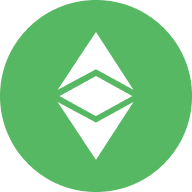
ONDO
Ondo price
$0.91800
+$0.016200
(+1.79%)
Price change for the last 24 hours

How are you feeling about ONDO today?
Share your sentiments here by giving a thumbs up if you’re feeling bullish about the coin or a thumbs down if you’re feeling bearish.
Vote to view results
Disclaimer
The social content on this page ("Content"), including but not limited to tweets and statistics provided by LunarCrush, is sourced from third parties and provided "as is" for informational purposes only. OKX does not guarantee the quality or accuracy of the Content, and the Content does not represent the views of OKX. It is not intended to provide (i) investment advice or recommendation; (ii) an offer or solicitation to buy, sell or hold digital assets; or (iii) financial, accounting, legal or tax advice. Digital assets, including stablecoins and NFTs, involve a high degree of risk, can fluctuate greatly. The price and performance of the digital assets are not guaranteed and may change without notice.
OKX does not provide investment or asset recommendations. You should carefully consider whether trading or holding digital assets is suitable for you in light of your financial condition. Please consult your legal/tax/investment professional for questions about your specific circumstances. For further details, please refer to our Terms of Use and Risk Warning. By using the third-party website ("TPW"), you accept that any use of the TPW will be subject to and governed by the terms of the TPW. Unless expressly stated in writing, OKX and its affiliates (“OKX”) are not in any way associated with the owner or operator of the TPW. You agree that OKX is not responsible or liable for any loss, damage and any other consequences arising from your use of the TPW. Please be aware that using a TPW may result in a loss or diminution of your assets. Product may not be available in all jurisdictions.
OKX does not provide investment or asset recommendations. You should carefully consider whether trading or holding digital assets is suitable for you in light of your financial condition. Please consult your legal/tax/investment professional for questions about your specific circumstances. For further details, please refer to our Terms of Use and Risk Warning. By using the third-party website ("TPW"), you accept that any use of the TPW will be subject to and governed by the terms of the TPW. Unless expressly stated in writing, OKX and its affiliates (“OKX”) are not in any way associated with the owner or operator of the TPW. You agree that OKX is not responsible or liable for any loss, damage and any other consequences arising from your use of the TPW. Please be aware that using a TPW may result in a loss or diminution of your assets. Product may not be available in all jurisdictions.
Ondo market info
Market cap
Market cap is calculated by multiplying the circulating supply of a coin with its latest price.
Market cap = Circulating supply × Last price
Market cap = Circulating supply × Last price
Circulating supply
Total amount of a coin that is publicly available on the market.
Market cap ranking
A coin's ranking in terms of market cap value.
All-time high
Highest price a coin has reached in its trading history.
All-time low
Lowest price a coin has reached in its trading history.
Market cap
$2.90B
Circulating supply
3,159,107,529 ONDO
31.59% of
10,000,000,000 ONDO
Market cap ranking
--
Audits

Last audit: Apr 17, 2021
24h high
$0.96030
24h low
$0.90050
All-time high
$2.1480
-57.27% (-$1.2300)
Last updated: Dec 16, 2024
All-time low
$0.50390
+82.17% (+$0.41410)
Last updated: Aug 5, 2024
Ondo Feed
The following content is sourced from .

比特币橙子Trader
Orange Evening Analysis 5.20
GENIUS Stablecoin Act advances further in the Senate! Crypto market is boiling, #RWA #Stablecoin sectors are taking off, with a potential capital exposure of up to $2 trillion. Dollar hegemony + new play for U.S. Treasury bonds—could this signal an altcoin bull run?
The biggest news last night was that the GENIUS Stablecoin Act passed the Senate's second procedural motion vote. While this doesn’t mean the bill is passed, it’s a significant step forward compared to the bearish news on May 8, when the procedural vote failed due to the Democratic Party withdrawing support (concerns over anti-money laundering and Trump-related conflicts of interest). Essentially, this marks a restart for the bill. The next steps include Senate debates and amendments, a final Senate vote, House review, bicameral coordination, and presidential signing. Although the road to final legislation is still long—earliest completion expected by August—the impact of this stablecoin bill on crypto is immense. Even crypto czar David Sacks tweeted that this procedural approval is a major victory for the cryptocurrency sector. Coinbase CEO also stated that if the bill passes, it would be a huge win for on-chain innovation. White House digital asset advisor Bo Hines believes the GENIUS Act will solidify the dollar’s dominance and position U.S. asset innovation as a global leader.
Many people might still be unclear about the specific benefits this bill brings to crypto. Firstly, it opens up massive capital exposure. The stablecoins we currently use, like USDC and USDT, are still considered niche assets by Wall Street, with compliance and regulation being the main barriers to large-scale institutional entry. If the stablecoin bill passes, institutions will have no more concerns. Elizabeth Warren even estimated that this bill could expand the stablecoin market size from $200 billion to $2 trillion, which is close to Canada’s GDP. Imagine this scale of capital entering the crypto market—wouldn’t everything skyrocket? Altcoin bull runs wouldn’t be a concern anymore.
Secondly, the global status of the dollar would be safeguarded. On-chain stablecoins and investments would become new reservoirs for U.S. Treasury bonds. Whether the new stablecoin is USD1 or USD2, the underlying asset will ultimately be U.S. Treasury bonds. Trump’s push for this stablecoin bill, even personally promoting it, is essentially aimed at weakening the dollar while ensuring its global influence. This requires enhancing the utility of U.S. Treasury bonds. Currently, Tether’s holdings of U.S. Treasury bonds are already among the top globally, surpassing Germany’s reserves as of last night’s news. If dozens or hundreds more Tethers are created in the future, U.S. Treasury bonds might not even be sufficient. This way, the U.S. debt crisis could be controlled. Trump’s earlier statement about relying on crypto to solve the U.S. debt problem might ultimately hinge on the stablecoin plan. With the current $37 trillion U.S. Treasury bond market, the capital influx into on-chain and crypto markets would be even larger. Therefore, if this bill passes, it would undoubtedly be a super bullish event, surpassing Bitcoin spot ETFs or even national strategic reserve-level benefits.
Because of this bill, today’s #RWA #Stablecoin sectors have surged. Let’s start with RWA. Since stablecoins are pegged to U.S. Treasury bonds or dollar-equivalent assets, they essentially qualify as real-world assets (RWA). Moreover, if the dollar can go on-chain, other physical and financial assets can also go on-chain. The method for on-chain integration would likely rely on existing infrastructure. Thus, #RWA is bound to be a super sector for a long time. Today, almost all RWA-related projects have surged, especially the new RWA stars on-chain like $collat, $kta, $token, $mpl, etc., with gains exceeding 30%. Leading projects like $ondo, $link, $mkr, $syrup, $om also showed strong performance, with single-day gains exceeding 5%.
Next is stablecoin protocols. Although there’s been much discussion today suggesting that the stablecoin bill is actually bearish for existing decentralized stablecoin protocols—since the future market will likely only recognize stablecoins collateralized by the dollar—the current stablecoin protocols were designed to counter centralized fiat currencies. They’ve implemented various mechanisms to optimize fiat currencies. However, Luna’s collapse has shown the limitations of pure algorithmic stablecoins. Over-collateralized or semi-algorithmic models either suffer from low capital efficiency or are prone to de-pegging, making it difficult to sustain large-scale operations. Theoretically, if hundreds more USDTs are created, decentralized stablecoins might struggle to find a foothold. Nonetheless, there’s still short-term speculative potential. Last night, $aave, $fxs, $ena, $pendle, $crv all saw gains of 10-20%, indicating that centralized exchanges (CEXs) currently have no other options but to play this concept.
As for on-chain meme coins, there wasn’t much action last night. I mentioned in a previous article that the “believe” strategy has diverted too much in-market capital to traditional Web2, causing a drop in retail investor confidence and sentiment. This marks a short-term peak. The next trend might return to mainstream narratives like RWA, AI, DeFi, PayFi, and L1. However, a true altcoin bull run will only happen after Bitcoin officially reaches ATH. This round of altcoin bull runs might occur after Bitcoin hits $120k, so everyone should patiently wait.
Show original
22.17K
2

CoinMarketCal
Most influential events in the last 24h 📈
🥇 8.8/10 influential, 7.6/10 catalyst scores
$ADA (@cardano_cf)
Q2 2025
Reeve Launch 👉
🥈 8.6/10 influential, 9.0/10 catalyst scores
$ONDO (@ondofinance)
18 Jan 2026
1.94B Token Unlock 👉
🥉 7.4/10 influential, 7.7/10 catalyst scores
$TRUMP (@GetTrumpMemes)
22 May 2025
Announcement 👉
More highlights 👉

39.83K
7

Joshua Jake
BREAKING: 🇺🇸 Senator Bill Hagerty says crypto "stablecoin issuers will be the largest holders of US treasuries in the world."
STATES should be the largest buyers of US Treasuries, NOT foreign nations. 🇺🇸
Why? Investing in US Treasuries keeps wealth and economic stability within our own borders, rather than relying on foreign entities.
California alone, as the 4th largest economy in the world, has the financial power to be a major player in supporting the nation’s fiscal health. Imagine the economic resilience if states prioritized domestic investment over global dependence!
It’s time to rethink our approach to treasury purchases and strengthen our own economic foundation.
$ONDO $LINK $ADA $BTC $XLM $PIN
70.25K
69

Ondo Finance
Here's what leaders from Kinexys by @jpmorgan, @chainlink, and @ondofinance had to say about the debut testnet transaction on Ondo Chain — a new L1 purpose-built to scale institutional-grade RWA tokenization: 👇
“The demonstrated cross-chain solution is a testament to what can be achieved through strong collaboration across diverse segments of the Web3 ecosystem, and we are pleased to have worked with Ondo and Chainlink to bring this to life as the first transaction on the Ondo Chain testnet."
— Nelli Zaltsman, Head of Platform Settlement Solutions, Kinexys Digital Payments at Kinexys by J.P. Morgan.
“I am very excited about our collaboration with Kinexys by J.P. Morgan and Ondo Finance, which is a clear sign of the TradFi and DeFi convergence that we have been talking about for many years now.”
— Sergey Nazarov (@SergeyNazarov), Co-Founder of Chainlink.
“The successful execution of this transaction represents a major milestone, not only for the launch of Ondo Chain’s testnet, but in doing so with two of the most prominent players in both traditional finance and crypto.”
—Nathan Allman (@nathanlallman), CEO of Ondo Finance.
87.41K
1.28K
ONDO calculator


Ondo price performance in USD
The current price of Ondo is $0.91800. Over the last 24 hours, Ondo has increased by +1.80%. It currently has a circulating supply of 3,159,107,529 ONDO and a maximum supply of 10,000,000,000 ONDO, giving it a fully diluted market cap of $2.90B. At present, the Ondo coin holds the 0 position in market cap rankings. The Ondo/USD price is updated in real-time.
Today
+$0.016200
+1.79%
7 days
-$0.11140
-10.83%
30 days
+$0.092000
+11.13%
3 months
-$0.29470
-24.31%
Popular Ondo conversions
Last updated: 05/20/2025, 21:51
| 1 ONDO to USD | $0.91740 |
| 1 ONDO to EUR | €0.81581 |
| 1 ONDO to PHP | ₱51.1469 |
| 1 ONDO to IDR | Rp 15,066.51 |
| 1 ONDO to GBP | £0.68662 |
| 1 ONDO to CAD | $1.2794 |
| 1 ONDO to AED | AED 3.3695 |
| 1 ONDO to VND | ₫23,816.20 |
About Ondo (ONDO)
- Official website
- Github
- Block explorer
About third-party websites
About third-party websites
By using the third-party website ("TPW"), you accept that any use of the TPW will be subject to and governed by the terms of the TPW. Unless expressly stated in writing, OKX and its affiliates ("OKX") are not in any way associated with the owner or operator of the TPW. You agree that OKX is not responsible or liable for any loss, damage and any other consequences arising from your use of the TPW. Please be aware that using a TPW may result in a loss or diminution of your assets.
Latest news about Ondo (ONDO)

JPMorgan completes first public tokenized treasury trade in partnership with Ondo Finance, Chainlink
JPMorgan Chase has completed its structured transaction on a public blockchain for the first time...
May 14, 2025|Crypto Briefing

JPMorgan’s Kinexys Connects With Public Blockchain on Ondo Chain Testnet Debut
The testnet deal links JPMorgan’s Kinexys payments network to Ondo Chain using Chainlink’s cross-chain tech
May 14, 2025|CoinDesk
Learn more about Ondo (ONDO)

What is Ondo: Get to know all about ONDO
What is Ondo ONDO? Ondo (ONDO) is a decentralized digital currency that leverages blockchain technology to enable secure and transparent transactions. As the native token of the Ondo Finance ecosystem, ONDO plays a pivotal role in bridging the gap between traditional finance (TradFi) and decentralized finance (DeFi). With a current price of $1.1452, Ondo ONDO has gained attention as an emerging global currency. But what is Ondo ONDO, and why is it significant? Let’s dive deeper into its ecosystem, tokenomics, and use cases.
Apr 29, 2025|OKX

How to buy Ondo ONDO on DEX?
What is Ondo ONDO? Ondo (ONDO) is a decentralized digital currency that leverages blockchain technology to facilitate secure and transparent transactions. As the native token of the Ondo Finance ecosystem, ONDO plays a pivotal role in governance, allowing holders to vote on proposals, protocol changes, and treasury management. With a total supply of 10 billion tokens, ONDO is designed to bridge the gap between traditional finance (TradFi) and decentralized finance (DeFi) by offering tokenized real-world assets (RWAs).
Mar 3, 2025|OKX

What is Ondo Finance (ONDO)? Bridging TradFi to DeFi
Ondo Finance is a decentralized finance (DeFi) platform that’s designed to bridge the gap between traditional finance (TradFi) and DeFi through the tokenization of real-world assets (RWA) . Ondo isn't a single platform. Instead, it's developed a range of products, protocols, and services aimed at offering crypto traders more avenues to trade.
May 28, 2024|OKX|
Intermediate
Ondo FAQ
How much is 1 Ondo worth today?
Currently, one Ondo is worth $0.91800. For answers and insight into Ondo's price action, you're in the right place. Explore the latest Ondo charts and trade responsibly with OKX.
What is cryptocurrency?
Cryptocurrencies, such as Ondo, are digital assets that operate on a public ledger called blockchains. Learn more about coins and tokens offered on OKX and their different attributes, which includes live prices and real-time charts.
When was cryptocurrency invented?
Thanks to the 2008 financial crisis, interest in decentralized finance boomed. Bitcoin offered a novel solution by being a secure digital asset on a decentralized network. Since then, many other tokens such as Ondo have been created as well.
Will the price of Ondo go up today?
Check out our Ondo price prediction page to forecast future prices and determine your price targets.
Monitor crypto prices on an exchange
Watch this video to learn about what happens when you move your money to a crypto exchange.
ESG Disclosure
ESG (Environmental, Social, and Governance) regulations for crypto assets aim to address their environmental impact (e.g., energy-intensive mining), promote transparency, and ensure ethical governance practices to align the crypto industry with broader sustainability and societal goals. These regulations encourage compliance with standards that mitigate risks and foster trust in digital assets.
Asset details
Name
OKcoin Europe LTD
Relevant legal entity identifier
54930069NLWEIGLHXU42
Name of the crypto-asset
Ondo
Consensus Mechanism
The Ethereum network uses a Proof-of-Stake Consensus Mechanism to validate new transactions on the blockchain. Core Components 1. Validators: Validators are responsible for proposing and validating new blocks. To become a validator, a user must deposit (stake) 32 ETH into a smart contract. This stake acts as collateral and can be slashed if the validator behaves dishonestly. 2. Beacon Chain: The Beacon Chain is the backbone of Ethereum 2.0. It coordinates the network of validators and manages the consensus protocol. It is responsible for creating new blocks, organizing validators into committees, and implementing the finality of blocks. Consensus Process 1. Block Proposal: Validators are chosen randomly to propose new blocks. This selection is based on a weighted random function (WRF), where the weight is determined by the amount of ETH staked. 2. Attestation: Validators not proposing a block participate in attestation. They attest to the validity of the proposed block by voting for it. Attestations are then aggregated to form a single proof of the block’s validity. 3. Committees: Validators are organized into committees to streamline the validation process. Each committee is responsible for validating blocks within a specific shard or the Beacon Chain itself. This ensures decentralization and security, as a smaller group of validators can quickly reach consensus. 4. Finality: Ethereum 2.0 uses a mechanism called Casper FFG (Friendly Finality Gadget) to achieve finality. Finality means that a block and its transactions are considered irreversible and confirmed. Validators vote on the finality of blocks, and once a supermajority is reached, the block is finalized. 5. Incentives and Penalties: Validators earn rewards for participating in the network, including proposing blocks and attesting to their validity. Conversely, validators can be penalized (slashed) for malicious behavior, such as double-signing or being offline for extended periods. This ensures honest participation and network security.
Incentive Mechanisms and Applicable Fees
Ethereum, particularly after transitioning to Ethereum 2.0 (Eth2), employs a Proof-of-Stake (PoS) consensus mechanism to secure its network. The incentives for validators and the fee structures play crucial roles in maintaining the security and efficiency of the blockchain. Incentive Mechanisms 1. Staking Rewards: Validator Rewards: Validators are essential to the PoS mechanism. They are responsible for proposing and validating new blocks. To participate, they must stake a minimum of 32 ETH. In return, they earn rewards for their contributions, which are paid out in ETH. These rewards are a combination of newly minted ETH and transaction fees from the blocks they validate. Reward Rate: The reward rate for validators is dynamic and depends on the total amount of ETH staked in the network. The more ETH staked, the lower the individual reward rate, and vice versa. This is designed to balance the network's security and the incentive to participate. 2. Transaction Fees: Base Fee: After the implementation of Ethereum Improvement Proposal (EIP) 1559, the transaction fee model changed to include a base fee that is burned (i.e., removed from circulation). This base fee adjusts dynamically based on network demand, aiming to stabilize transaction fees and reduce volatility. Priority Fee (Tip): Users can also include a priority fee (tip) to incentivize validators to include their transactions more quickly. This fee goes directly to the validators, providing them with an additional incentive to process transactions efficiently. 3. Penalties for Malicious Behavior: Slashing: Validators face penalties (slashing) if they engage in malicious behavior, such as double-signing or validating incorrect information. Slashing results in the loss of a portion of their staked ETH, discouraging bad actors and ensuring that validators act in the network's best interest. Inactivity Penalties: Validators also face penalties for prolonged inactivity. This ensures that validators remain active and engaged in maintaining the network's security and operation. Fees Applicable on the Ethereum Blockchain 1. Gas Fees: Calculation: Gas fees are calculated based on the computational complexity of transactions and smart contract executions. Each operation on the Ethereum Virtual Machine (EVM) has an associated gas cost. Dynamic Adjustment: The base fee introduced by EIP-1559 dynamically adjusts according to network congestion. When demand for block space is high, the base fee increases, and when demand is low, it decreases. 2. Smart Contract Fees: Deployment and Interaction: Deploying a smart contract on Ethereum involves paying gas fees proportional to the contract's complexity and size. Interacting with deployed smart contracts (e.g., executing functions, transferring tokens) also incurs gas fees. Optimizations: Developers are incentivized to optimize their smart contracts to minimize gas usage, making transactions more cost-effective for users. 3. Asset Transfer Fees: Token Transfers: Transferring ERC-20 or other token standards involves gas fees. These fees vary based on the token's contract implementation and the current network demand.
Beginning of the period to which the disclosure relates
2024-04-20
End of the period to which the disclosure relates
2025-04-20
Energy report
Energy consumption
6330.65239 (kWh/a)
Energy consumption sources and methodologies
The energy consumption of this asset is aggregated across multiple components:
To determine the energy consumption of a token, the energy consumption of the network(s) ethereum is calculated first. Based on the crypto asset's gas consumption per network, the share of the total consumption of the respective network that is assigned to this asset is defined. When calculating the energy consumption, we used - if available - the Functionally Fungible Group Digital Token Identifier (FFG DTI) to determine all implementations of the asset of question in scope and we update the mappings regulary, based on data of the Digital Token Identifier Foundation.
ONDO calculator

















Socials